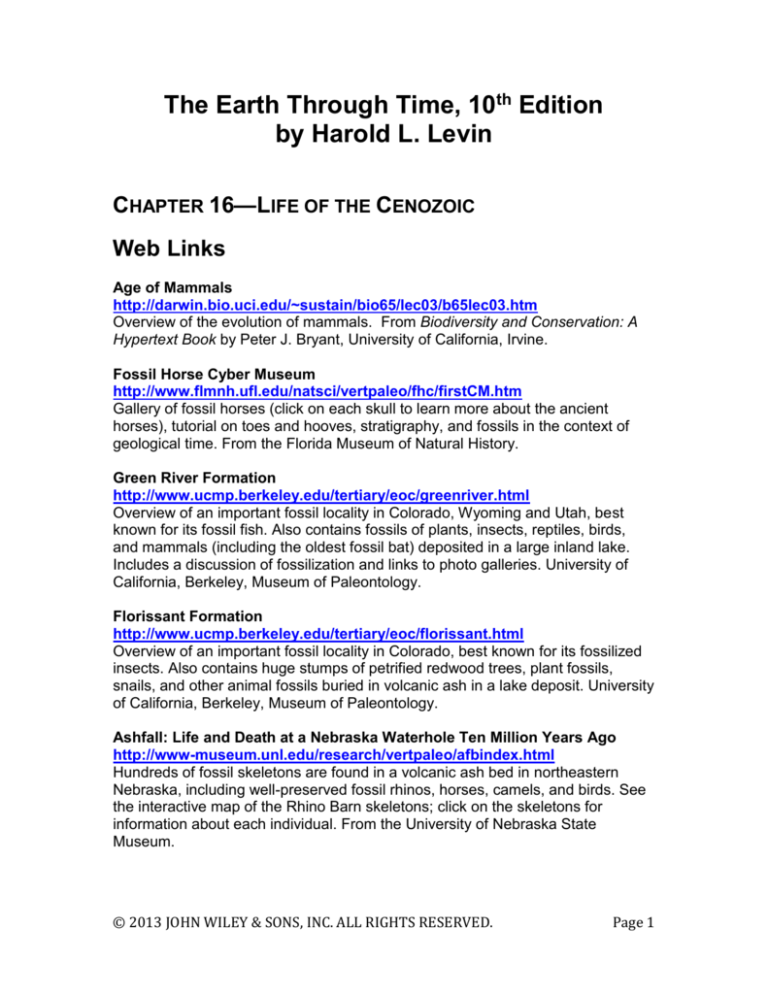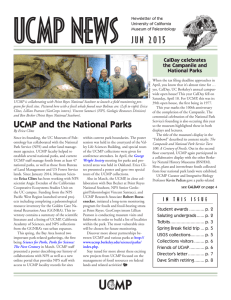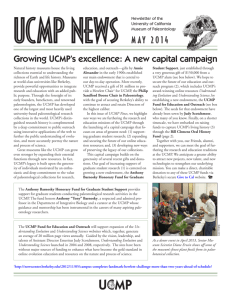
The Earth Through Time, 10th Edition
by Harold L. Levin
CHAPTER 16—LIFE OF THE CENOZOIC
Web Links
Age of Mammals
http://darwin.bio.uci.edu/~sustain/bio65/lec03/b65lec03.htm
Overview of the evolution of mammals. From Biodiversity and Conservation: A
Hypertext Book by Peter J. Bryant, University of California, Irvine.
Fossil Horse Cyber Museum
http://www.flmnh.ufl.edu/natsci/vertpaleo/fhc/firstCM.htm
Gallery of fossil horses (click on each skull to learn more about the ancient
horses), tutorial on toes and hooves, stratigraphy, and fossils in the context of
geological time. From the Florida Museum of Natural History.
Green River Formation
http://www.ucmp.berkeley.edu/tertiary/eoc/greenriver.html
Overview of an important fossil locality in Colorado, Wyoming and Utah, best
known for its fossil fish. Also contains fossils of plants, insects, reptiles, birds,
and mammals (including the oldest fossil bat) deposited in a large inland lake.
Includes a discussion of fossilization and links to photo galleries. University of
California, Berkeley, Museum of Paleontology.
Florissant Formation
http://www.ucmp.berkeley.edu/tertiary/eoc/florissant.html
Overview of an important fossil locality in Colorado, best known for its fossilized
insects. Also contains huge stumps of petrified redwood trees, plant fossils,
snails, and other animal fossils buried in volcanic ash in a lake deposit. University
of California, Berkeley, Museum of Paleontology.
Ashfall: Life and Death at a Nebraska Waterhole Ten Million Years Ago
http://www-museum.unl.edu/research/vertpaleo/afbindex.html
Hundreds of fossil skeletons are found in a volcanic ash bed in northeastern
Nebraska, including well-preserved fossil rhinos, horses, camels, and birds. See
the interactive map of the Rhino Barn skeletons; click on the skeletons for
information about each individual. From the University of Nebraska State
Museum.
© 2013 JOHN WILEY & SONS, INC. ALL RIGHTS RESERVED.
Page 1
La Brea Tar Pits
http://www.ucmp.berkeley.edu/quaternary/labrea.html
Visit Pleistocene fossils preserved in tar pits associated with an oil field in Los
Angeles, including at least 59 species of mammal and over 135 species of bird,
along with plants, mollusks, and insects. University of California, Berkeley,
Museum of Paleontology.
Page Museum, La Brea Tar Pits
http://www.tarpits.org/
The website of the Natural History Museum of Los Angeles County. Explore the
tar pits and discover mammal skeletons including sabertoothed cat, dire wolf,
ground sloth, mammoths. See a children's story about an ice age adventure.
The Life and Times of Long Dead Sharks
http://www.elasmo.com/frameMe.html?file=paleo/fauna/va_eoc.html&menu
=bin/menu_fauna-alt.html
Photographs of many types of sharks teeth from many localities including:
Early Eocene Sharks & Rays of Virginia
Lee Creek aka Aurora - A Neogene Fauna from North Carolina
Late Palaeocene Sharks & Rays of the Chesapeake Bay Region
Cretaceous Sharks & Rays of North Carolina
Upper Cretaceous Sharks & Rays of Kansas The Great Interior Sea
Peedee (Cretaceous) Faunal List from Lake Waccamaw, NC
And many more
Mammoths and Mastodons
http://skywalker.cochise.edu/wellerr/students/mammothmastodon/mastodon.htm
Discussion of these two large mammoths and their demise.
Ice Ages and the Midwestern U.S. 16,000 Years Ago
http://www.museum.state.il.us/exhibits/ice_ages/
Online Exhibit from the Illinois State Museum. Learn about when and why the Ice
Ages occurred, and visit the Late Pleistocene landscape of 16,000 years ago to
see fossil plants and animals, and maps of melting glaciers. Learn about the Late
Pleistocene extinctions and visit a cave where the fossils are found.
© 2013 JOHN WILEY & SONS, INC. ALL RIGHTS RESERVED.
Page 2







